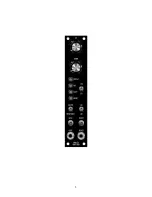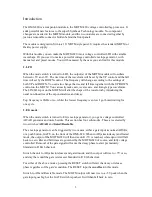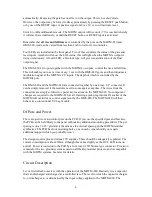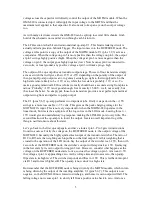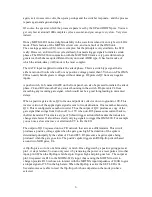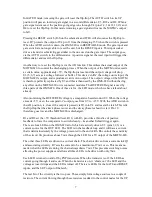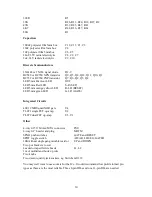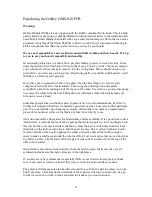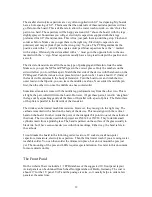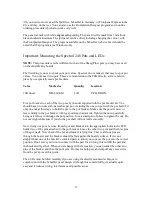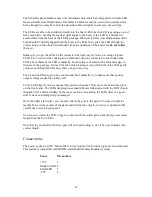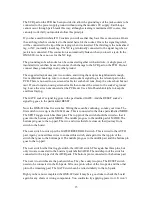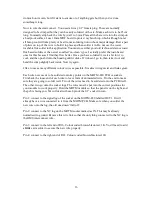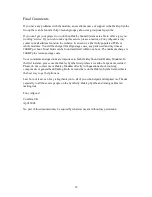
The smaller electrolytic capacitors are very often supplied with 0.1” lead spacing. My boards
have a hole spacing of 0.2”. This means that the underside of these radial capacitors will not
go flat onto the board. This is deliberate to allow the water wash to work, so don’t force the
part in too hard. The capacitors will be happy at around 0.2” above the board, with the legs
slightly splayed. Sometimes you will get electrolytic capacitors supplied with their legs
preformed for 0.2” (5mm) insertion. This is fine, just push them in until they stop. Cinch and
solder as before. Make sure you get them in the right way. Electrolytic capacitors are
polarised, and may explode if put in the wrong way. No joke. The PCB legend marks the
positive side with a ‘+’, and its the square solder pad. Most capacitors have the ‘-’ marked
with a stripe. Obviously, the side marked with a ‘-’ must go in the opposite hole to the one
marked with the ‘+’ sign. Most capacitors usually have a long lead to depict the positive end
as well.
The discrete transistors are all in the same type of packaging and therefore look the same.
Make sure you get the NPN and PNP types in the correct places. Only the numbers on the
side will allow you to tell them apart. Match the flat side of the device with that shown on the
PCB legend. Push the transistor into place but don’t push too far. Leave about 0.2” (5mm) of
the leads visible underneath the body of transistor. Turn the board over and cinch the two
outer leads on the flip side, you can leave the middle one alone. Now solder the middle pin
first, then the other two once the middle one has cooled solid.
Sometimes transistors come with the middle leg preformed away from the other two. This is
all right, the part will still fit into the board. However, if I get these parts, I tend to ‘straighten’
the legs out by squashing gently all the three of them flat with a pair of pliers. The flat surface
of the pliers is parallel to the flat side of the transistor.
The diodes can be treated much like resistors. However, they must go in the right way. The
cathode is marked with a band on the body of the device. This must align with the vertical
band on the board. In other words the point of the triangular bit points
towards
the cathode of
the diode. The two diodes used in this project are 1N4148 or 1N914. They look like small
cylinders made from a pinkish glass. The band is painted on the surface of the glass usually in
black ink, but I have seen some devices with white markings. Either way, the band refers to
the cathode.
I would make the board in the following order: resistors, IC sockets, small non-polar
capacitors, transistors, electrolytic capacitors. Then the final water wash if you are using water
washable solder. You can then solder the trimmers in place, but do not mount the pots just
yet. The mounting of the pots and LEDs requires special attention. See later in this document
for more details on this.
The Front Panel
On the website I have included a 1:1 FPD database of the suggested 1U front panel layout.
Actual panels can be obtained from Schaeffer-Apparatebau of Berlin, Germany. The cost is
about £17 for the 1U panel. VAT and the postage is extra, so it usually helps to order a few
panels at the same time.
12
Summary of Contents for MOTM-820
Page 2: ...2...


